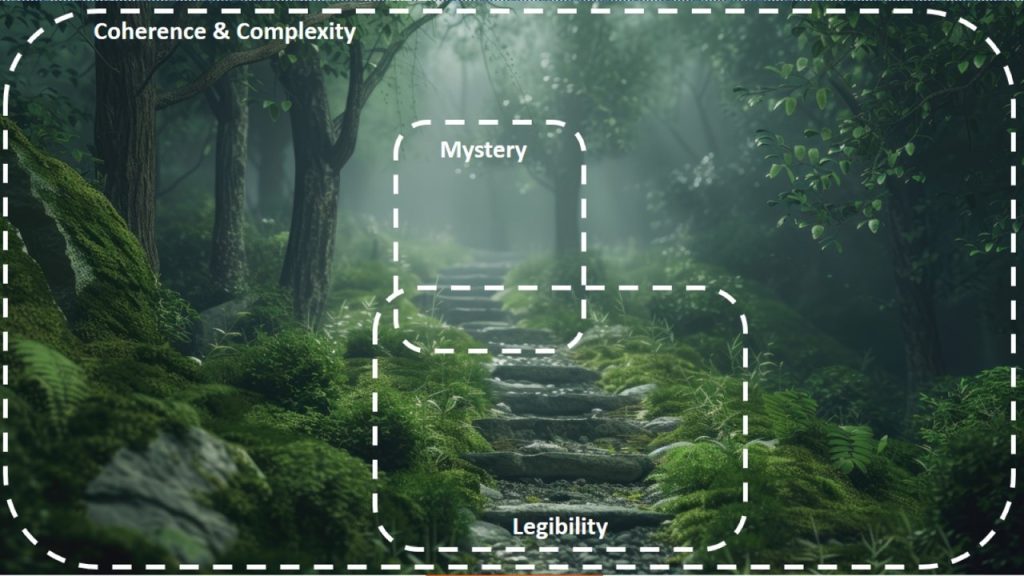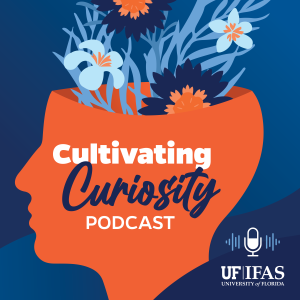Landscapes – More Than Meets the Eye
Landscapes come in many forms, textures, colors, sizes, etc. How we view and understand our landscapes is influenced by our individual preferences and perceptions. When looking at our landscapes or gardens, we know what we like and what we do not like – our preferences. But have you ever wondered, “Why do I like this?” We simply refer to this as “perception.” Preference is our aesthetic attraction to a landscape, and our perceptions are our understanding of a landscape. I refer to this as the unseen landscape.
Preferences & Perceptions
Landscape preferences and perceptions are commonly researched in the field of landscape architecture and horticulture. This allows us to understand our interaction with our environment. This includes how we design and plan our environments – or our yards. As an example, a few years ago I participated in research where we studied visual attention and preferences with eye-tracking technology. Our goal was to understand what people look at when viewing a landscape and if it related to their preferences. Results would help influence how we design and plan residential landscapes.
Understanding landscape preferences and perceptions is complicated because our own preferences and perceptions have biological and cultural influences. Preferences and perceptions are rooted in a biological/evolutionary response but are mediated by our cultural influences. I refer to these interactions as the “unseen landscape.” Cultural influences on landscapes are easier to understand. The biological, or evolutionary, influences are very interesting. We can see how our current landscape preferences/perceptions are linked to basic needs for survival as early hunting/gathering humans. There are a few landscape preferences/perception theories commonly referenced when discussing landscapes: prospect-refuge theory, plant blindness, and information processing theory.
Prospect Refuge Theory
The prospect-refuge theory relates to our innate desire to feel safe (refuge) while simultaneously looking outwards (prospect). This theory is linked to early humans. Humans were never on top of the “food chain,” and we were prey to many predators, such as lions. We preferred living in areas that provided protection while simultaneously allowing us to look outwards to see predators but also resources, such as food and water. Research in this field has shown that when youth are surveyed, they tend to prefer “savanna-like landscapes, consisting of low shrubs and clumps of trees divided by open spaces, offers an attractive combination of prospect and refuge.” As participants age, we notice those preferences shift away from savanna-like landscapes, yet those new preferred landscapes still contain the “prospect” and “refuge” components.
Information Processing Theory
Information processing theory builds on prospect-refuge theory. Prospect-refuge theory is rather binary. Information processing theory is more strongly related to how we derive information from our environment. A stronger understanding of landscapes, or our environment, leads to a higher preference. This theory argues landscapes should be coherent, complex, legible, and mysterious. Coherence relates to our ability to see order and organization in a landscape. Complexity means there is more information available and evokes exploration. Legibility is our ability to understand our environment, so we can easily find our way around and feel safe. Mystery evokes exploration – part of our landscape is not fully known, so we want to investigate. Ideally, all landscapes maintain these four constructs, but all four constructs relate to prospect (complexity and mystery) and refuge (legibility and coherence).

Plant Blindness Theory
Plant Blindness relates to our “inability to notice plants in one’s environment, recognize their importance or appreciate their unique biological features.” When we view landscapes, we instinctively see animals. This, again, is based on a biological response. Our brains filter out signals and since plants do not have a tendency to hunt us down as prey, our brains filter out plants as “white noise,” unless we purposefully look at plants.
Conclusions
Each landscape or garden within our communities relates to the three landscape theories. Our homes, create a space of refuge, but our control over the landscape provides coherence, complexity, and mystery. Simultaneously, we find plants fall as a lower priority (generally) within decision-making, despite their valuable role in maintaining our community, homes, and environment. When casting these theories through a lens of our cultural influences, we then see how landscape preferences shift and change. Yet – in a near-global assessment of landscape typologies, despite the differences in cultures, worldviews, etc., the major biological influences in landscapes still persist – the foundation of the unseen landscape.
How to Reach Us!
If you have any questions about planting, selecting, and maintaining your garden, reach out to our Master Gardener Volunteer Help Desk at Nassau County’s extension office for more tips. For all your questions about managing your gardens and landscapes, you may reach out to the Nassau County Master Gardener Volunteers at NassauMGV@ifas.ufl.edu.
Check out EXTENSION CORD
A UF/IFAS Extension podcast for anyone interested in plants!
More Information:
The Good Gardener – An MGV Newsletter
UF/IFAS Extension Nassau County
UF/IFAS Extension Blogs – Taylor Clem
Social Media:
 4
4

